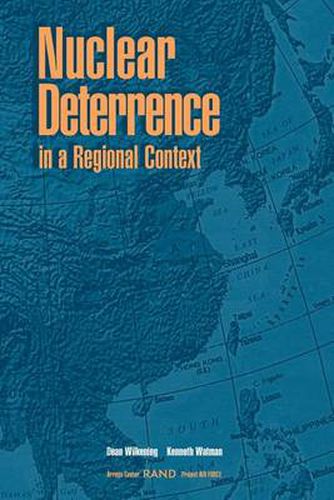Readings Newsletter
Become a Readings Member to make your shopping experience even easier.
Sign in or sign up for free!
You’re not far away from qualifying for FREE standard shipping within Australia
You’ve qualified for FREE standard shipping within Australia
The cart is loading…






This report addresses the question of deterring nuclear attacks by regional adversaries against the United States, U.S. forces overseas, or U.S. allies. Because emerging nuclear states will have small arsenals at first, regional nuclear threats will be made primarily for three political purposes, to: (1) deter the U.S. from intervening in a regional conflict, (2) intimidate U.S. regional allies; and/or (3) ensure the survival of their state or regime. Effective U.S. deterrent strategies vary depending on the purpose behind the nuclear threat. A U.S. strategy of escalation dominance should credibly deter nuclear threats against the U.S. homeland or U.S. forces overseas when the adversary’s objective is to prevent U.S. intervention. A U.S. strategy of extended deterrence based on escalation dominance, backed up by theater defenses, should prevent U.S. regional allies from being intimidated by an adversary’s nuclear threats. For the third threat, which is the most difficult to deter, U.S. strategy should shift away from retaliatory deterrence to highly effective damage limitation (i.e., counterforce capabilities backed up by effective defenses).
$9.00 standard shipping within Australia
FREE standard shipping within Australia for orders over $100.00
Express & International shipping calculated at checkout
This report addresses the question of deterring nuclear attacks by regional adversaries against the United States, U.S. forces overseas, or U.S. allies. Because emerging nuclear states will have small arsenals at first, regional nuclear threats will be made primarily for three political purposes, to: (1) deter the U.S. from intervening in a regional conflict, (2) intimidate U.S. regional allies; and/or (3) ensure the survival of their state or regime. Effective U.S. deterrent strategies vary depending on the purpose behind the nuclear threat. A U.S. strategy of escalation dominance should credibly deter nuclear threats against the U.S. homeland or U.S. forces overseas when the adversary’s objective is to prevent U.S. intervention. A U.S. strategy of extended deterrence based on escalation dominance, backed up by theater defenses, should prevent U.S. regional allies from being intimidated by an adversary’s nuclear threats. For the third threat, which is the most difficult to deter, U.S. strategy should shift away from retaliatory deterrence to highly effective damage limitation (i.e., counterforce capabilities backed up by effective defenses).